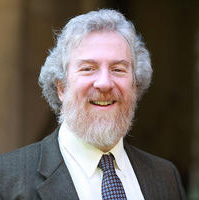Isaiah: Visions and Wellsprings of Salvation

It is often interesting to look closely at the haftarot (readings from the Prophets), and wonder about the juxtaposition of texts, themes, and ideas; what is this text looking to tell us or provoke/inspire within us?
On the eighth and final day of Pesah, the haftarah is taken from Isaiah 10:32–12:6, sections that contain some of the most famous images of all prophetic literature. The culmination of the story of the salvation of the Children of Israel brings us a vision of the salvation of all humanity: “[T]hey shall not hurt or destroy in all My holy mountain, for the earth will be filled with the knowledge of God as the waters cover the seabed” (10:9). If enslavement in Egypt is the lowest point of our history, and the Covenant and Revelation between God and Israel at Sinai are the beginning of the path to redemption, it is this prophecy that offers the vision for that hard journey toward redemption.
In Isaiah 10:6, we read that the leopard will lie down with the lamb (and an ironic comment suggests that the lamb might not sleep very well), a calf and lion cub will walk together, and a young child will lead them. This suggests that even the order of nature will be overturned.
An image from this haftarah has entered the ritual of havdalah at the end of Shabbat. The preliminary verses of havdalah include “Ush’avtem maym besasson mima’aynei hayeshua” (You shall draw water in joy from the wells of Salvation) [12:3], continuing the “water” metaphor for knowledge of God. There is a tradition that the Messiah will not come on Friday, the eve of Shabbat, because this would be an imposition on the Jewish People in preparing for Shabbat. But there is a strong sense that the end of Shabbat is a time when the Messiah might arrive—and many of the poems and melodies for havdalah and se’udah selishit (thethird Shabbat meal that leads into havdalah) are filled with mystic visions and musical themes of yearning.
The early Zionists loved this section of Isaiah; they saw the Yishuv (the Jewish community in Palestine) as fulfilling the text “a blossom will grow from the stump of Jesse” (Isa. 11:1), and they sang and danced to Ushavtem Mayim as we still dance today. As we draw to the end of Pesah, allow yourself to hear as new the vision and dream of Isaiah—and hear his words echo each week at havdalah, especially as we approach Yom Ha’atzma’ut, State of Israel Independence Day.



